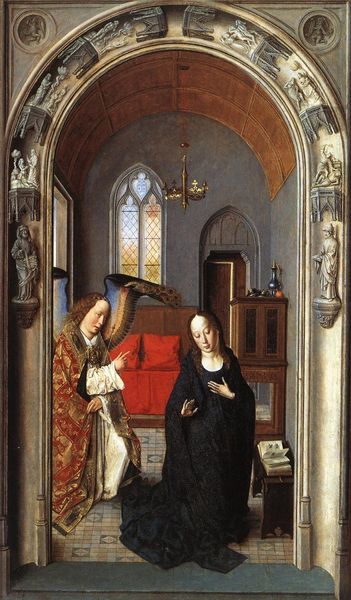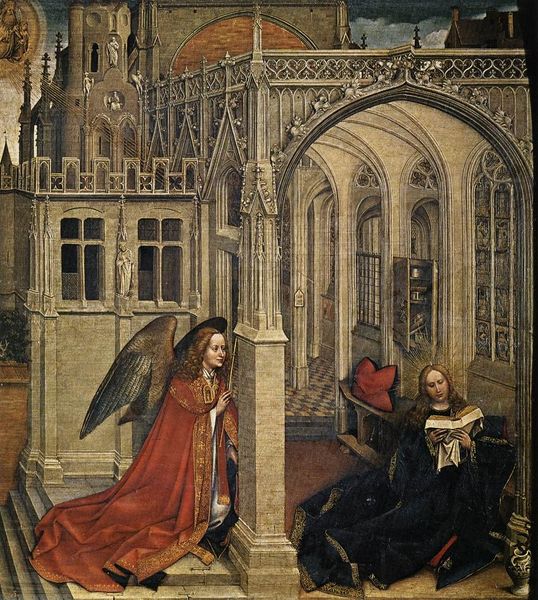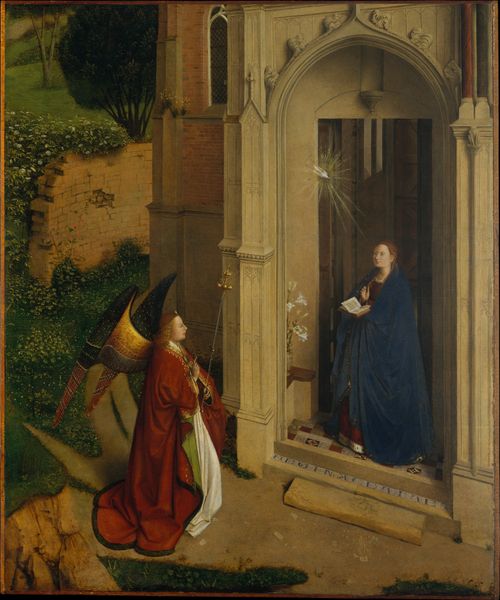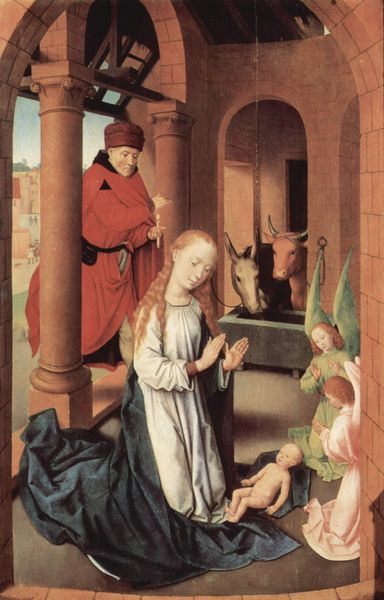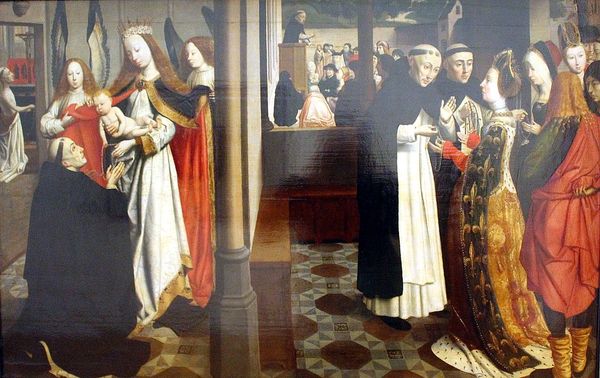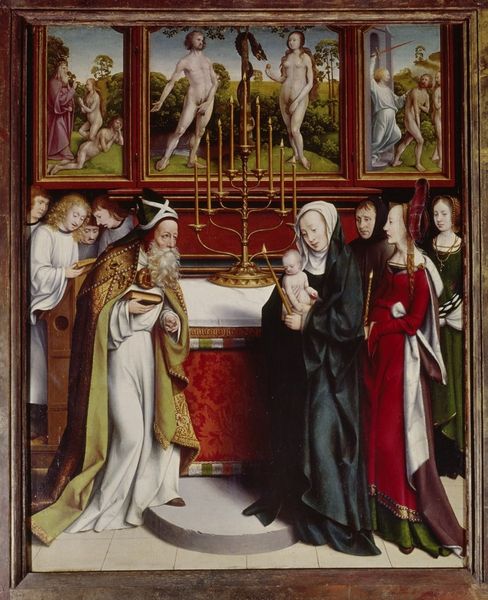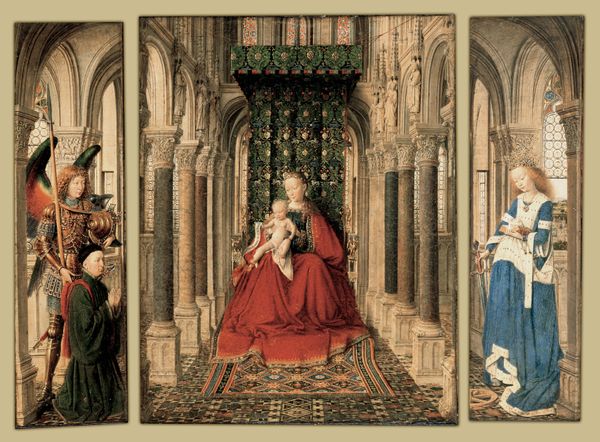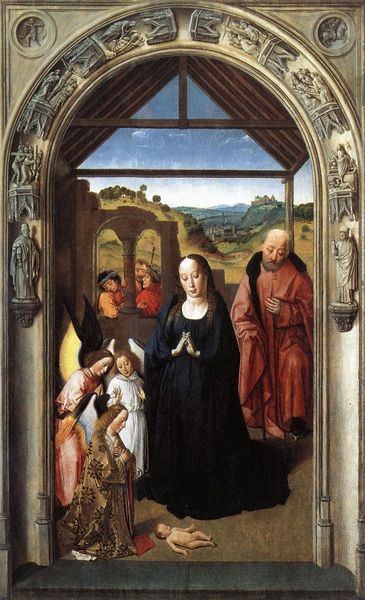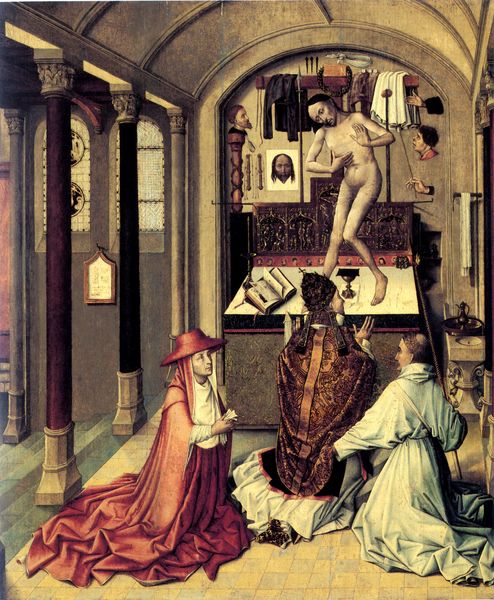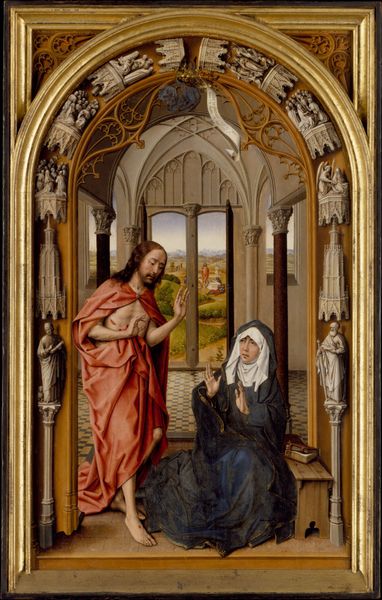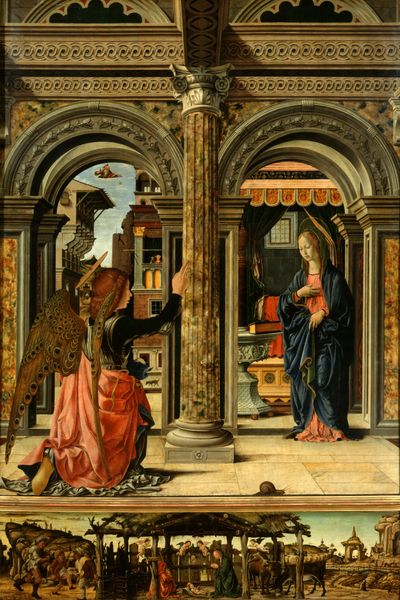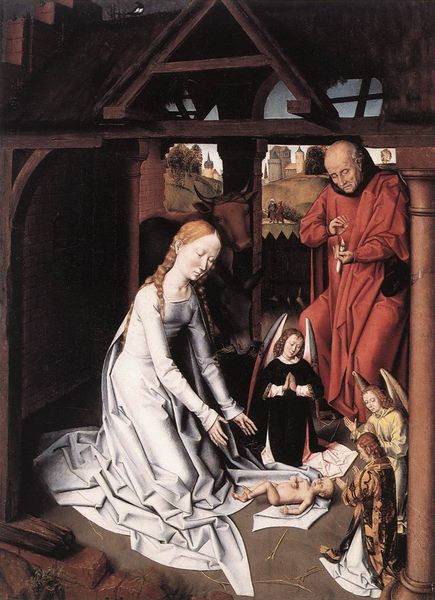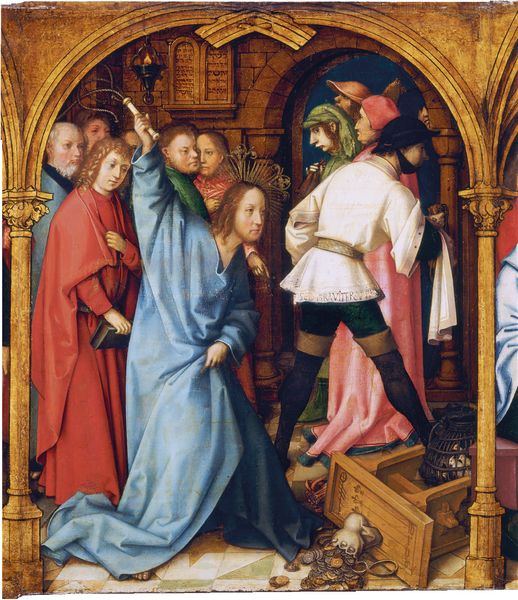
panel, painting, oil-paint
#
panel
#
allegory
#
narrative-art
#
painting
#
oil-paint
#
sculpture
#
landscape
#
holy-places
#
arch
#
christianity
#
history-painting
#
early-renaissance
#
virgin-mary
#
angel
Dimensions: 54.8 x 85.5 cm
Copyright: Public domain
Editor: This is Petrus Christus's "The Annunciation," painted around 1452 using oil on panel. The setting is so interesting, almost like a stage. What catches your eye when you look at this work? Curator: I'm immediately drawn to the craft, to the very making of the illusion. Oil paint, then, was a relatively new technology. Christus is exploiting its capacity for detail, for rendering the textures of fabric, stone, and even light. How does the use of this relatively new oil paint contribute to its cultural status as a valued object? Editor: Well, you can see that incredible detail everywhere – in the angel's robes, in the floor tiles... but what does it mean that it looks so much like a stage? Curator: Precisely! Note the architectural framing, and how it mimics a contemporary domestic interior. Christus is showcasing his mastery, creating a valuable object that signifies wealth and piety. And notice the contrast with the older, carved figures. It reflects the hierarchy between craft and “fine art,” doesn't it? The painting becomes about demonstrating skills, and social standings. Editor: It does make me think about the different levels of artistry at play, like a hierarchy as you mention. Are you suggesting that Christus’s choices about the materiality reflect some status anxiety about painting being “merely” a craft? Curator: Exactly! Consider where the materials are sourced. The pigments, the wood panel, the labor involved... all expensive, signaling status. The painting becomes a commodity, embedded in economic and social systems of the time. Editor: So, beyond the religious subject, Christus is also making a statement about the value of his craft and materials. It's fascinating to see how something seemingly spiritual can be so grounded in its material reality. I'll never look at paintings the same way again! Curator: And that's how we can really unpack history - by observing closely how these pieces become social products through labour, materials and social status.
Comments
No comments
Be the first to comment and join the conversation on the ultimate creative platform.
